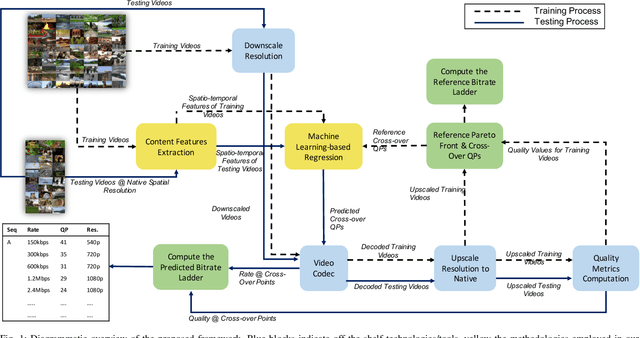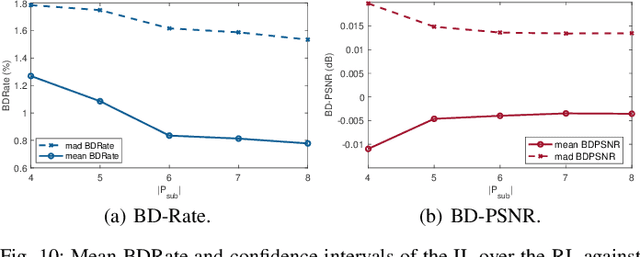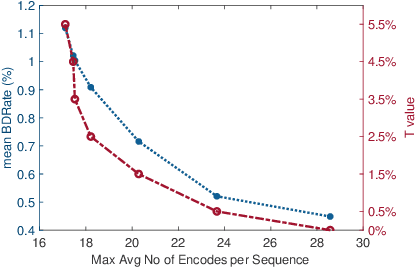Efficient Bitrate Ladder Construction for Content-Optimized Adaptive Video Streaming
Paper and Code
Feb 08, 2021



One of the challenges faced by many video providers is the heterogeneity of network specifications, user requirements, and content compression performance. The universal solution of a fixed bitrate ladder is inadequate in ensuring a high quality of user experience without re-buffering or introducing annoying compression artifacts. However, a content-tailored solution, based on extensively encoding across all resolutions and over a wide quality range is highly expensive in terms of computational, financial, and energy costs. Inspired by this, we propose an approach that exploits machine learning to predict a content-optimized bitrate ladder. The method extracts spatio-temporal features from the uncompressed content, trains machine-learning models to predict the Pareto front parameters, and, based on that, builds the ladder within a defined bitrate range. The method has the benefit of significantly reducing the number of encodes required per sequence. The presented results, based on 100 HEVC-encoded sequences, demonstrate a reduction in the number of encodes required when compared to an exhaustive search and an interpolation-based method, by 89.06% and 61.46%, respectively, at the cost of an average Bj{\o}ntegaard Delta Rate difference of 1.78% compared to the exhaustive approach. Finally, a hybrid method is introduced that selects either the proposed or the interpolation-based method depending on the sequence features. This results in an overall 83.83% reduction of required encodings at the cost of an average Bj{\o}ntegaard Delta Rate difference of 1.26%.
 Add to Chrome
Add to Chrome Add to Firefox
Add to Firefox Add to Edge
Add to Edge